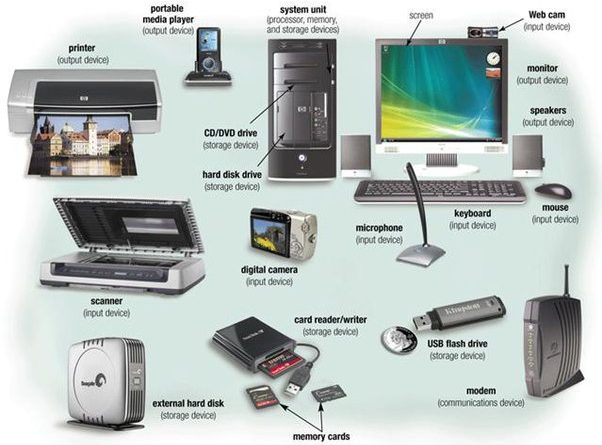What You Need to Know About Computer Hardware
Computer hardware refers to external and internal devices that enable computers to perform key functions, such as monitors, keyboards, mice and data storage/graphics cards.
Tom’s Hardware was established in 1996, making it one of the oldest digital tech media websites. Over two decades later, this resource remains popular with PC enthusiasts and offers some of the most lively forums online.
Motherboard
The motherboard of a computer serves as the central nerve center, connecting and powering all its components including CPU, RAM and hard drives. In addition, it features a cooling fan to dissipate excess heat generated by its hardware support.
Motherboards consist of traces that connect slots for CPU, random-access memory (RAM), and expansion cards such as video cards. Furthermore, there are ports which enable it to communicate with external devices like monitors and keyboards via cables and wires; Motherboards enhance computers by adding features not available on factory models.
CPU
The central processing unit, or CPU, of your computer is responsible for understanding and executing all commands sent from you to it. You’ll find CPUs present in all types of computers from desktops and laptops to tablets and smartphones. Upgrades for your CPU can include faster hard drives or additional memory modules.
The CPU is made of silicon and connects directly to the motherboard via pins. It operates according to a fetch-decode-execute pattern: first, a compiler converts computer program source code into binary digits (bits); the CPU then collects these bits, decodes them and executes them before saving their results in memory for further processing or instructions; additionally, an arithmetic and logical unit performs mathematical, logical and decision-making operations within your computer system.
RAM
RAM (random access memory) is essential to every computing experience imaginable – be it typing letters, saving files or playing video games on your computer. As one of its primary components, it should always work efficiently to provide you with the best experience.
Dynamic random-access memory, or DRAM, stores data that your computer needs right now to operate effectively and is quickly accessed by your CPU to perform any necessary work. It differs from storage – hard drives or solid state drives which hold on to files and apps even when your computer is off – in that memory can only be accessed quickly when needed by CPU. Javatpoint offers more in depth explanation of computer memory for better understanding this subject matter experts are present there as well.
Graphics Card
Graphics cards in computers take information from their CPU and transform it into images made up of pixels, which make up colors and patterns. Some cards also support HD video playback.
GPU memory, known as Video Random Access Memory (VRAM), contains information and completed images for the GPU to access at very high speeds, being both read and written to simultaneously.
Laptops and low-cost desktop computers often contain integrated GPUs built directly into their motherboards. Unfortunately, these GPUs lack their own dedicated video RAM (VRAM), instead drawing from main RAM stockpile; therefore consuming too much of this resource when gaming heavily. Dedicate cards offer more VRAM capacity but require special cooling.
Monitor
Monitors are output devices used to display data processed by computers. They show us the results of their work in pictorial form for easier understanding.
Monitors are essential components of computer systems as without them we would not be able to see our work. Composed of an LCD panel, LED backlight, power supply and control circuits.
Display resolution is measured in terms of how many pixels can be shown on a computer’s screen at once; higher resolution means more detail, while color depth measures how many distinct colors it can display – an essential consideration when working with digital art and graphics, since greater color depth means vibrant images with greater accuracy and vibrancy.

